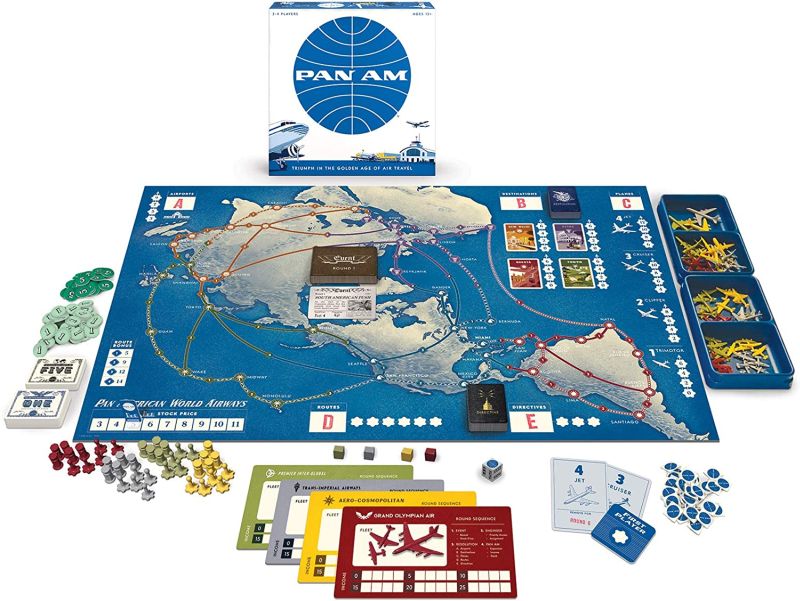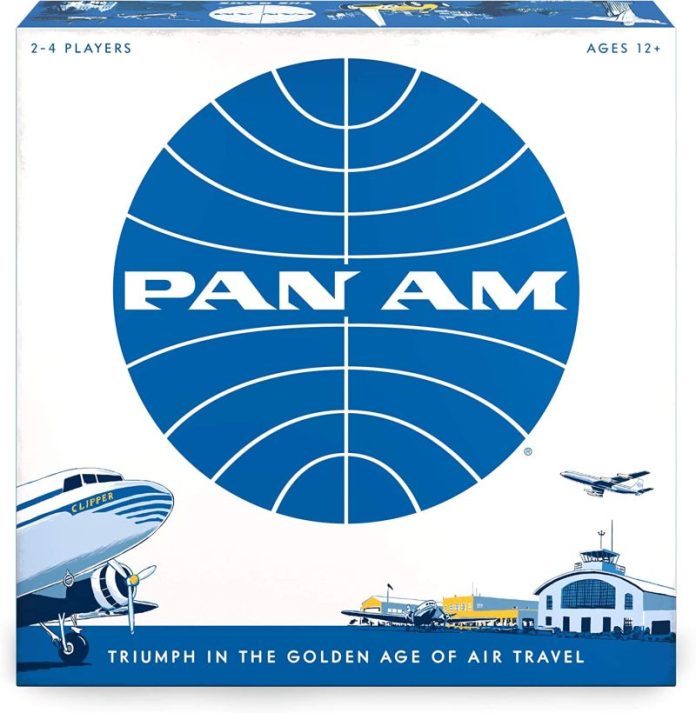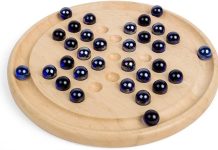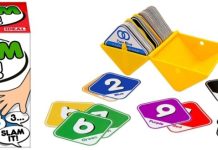One of my favourite board games to play is Ticket to Ride, it is an excellent game of strategy that involves train travel across North America. But we might just have a new favourite with Pan Am as at first glance it looks like it is very similar to Ticket to Ride but once playing it, it is more challenging and fun. The trains have gone and been replaced by aeroplanes, global routes and destinations.
Pan Am from Funko Games is a strategy game for 2-4 players, aged 12+. It has a playing time of around 60 minutes. The idea of the game is that players must build their fledgling airline into a booming business that spans the globe. Expand routes by sending engineers to claim new airports, planes, and destinations for your airline, all while using your income to buy Pan Am stock to help build your company.
In the box:
- Game Board
- Hangars (x2)
- Engineers (x20 in 4 different colours)
- Airports (x20 in 4 different colours)
- 52 Aeroplanes (x20 Trimotors, x16 Clippers, x12 Cruisers and x4 Jets)
- Player Mats (x4)
- Income Trackers (x4)
- Event Cards (x28)
- Destination Cards (x50)
- Directive Cards (x40)
- Stock Cards (x40 One Stock, x20 Five Stock)
- Pan Am Die
- Pan Am Route Markers (x40)
- $1 Money (x50)
- $5 Money (x25)
- Cruiser and Jet Tiles
- First Player Marker
- Stock Marker and Base

Pan Am (Pan American Airways) was the world’s first truly global airline. It started life in 1927 as an airmail carrier. Pan Am was the first airline to connect North and South America, the first to offer commercial flights across both the Atlantic and Pacific Oceans, and the first to computerise their reservations but went out of business in 1991.
In Pan Am, the board game, players oversee a fledgling airline struggling to get off the ground. As your routes expand across the globe you spend any income from operating your airline to buy Pan Am stock. You have two objectives:
- Claim your routes by sending engineers to acquire airports, planes and destinations.
- Use any income you earn from operating and selling routes to buy stock.
The game is played over seven rounds, spanning the era of Pan Am’s beginnings to the retirement of founder Juan Trippe in 1968. The player who has amassed most stock at the end of the game is the winner.
Seasoned board game players across the globe will know that nearly every game needs some setting up before play can commerce (in our house that involves the board being set up, cups of tea being made and the kids rushing to the snack drawer), Pan Am is no different to ensure a smooth flight across the board.
Setting up the game to play is done in two parts – board setup and player setup.
Board setup: place the game board in the centre of the table and place the two hangers next to the planes on the right hand side of the board (they go on the table, not on the board). Create a deck of seven Event Cards (they are labelled Round 1, Round 2 etc.), select one at random from each round and place the seven cards face down on the current event space on the board (the unused cards go back into the box). Shuffle the Destination cards and place them face down on the Destinations space on the board and place four cards from the top of the deck face up in the spaces below the deck. Shuffle the Directive Cards and place them face down in the Directives area at the bottom of the board. Place the Pan Am route markers, money, stocks, and the Pan Am die next to the board. Set aside the Stock Marker for now (the first Event card will set the stock price later). Place the Cruiser and Jet tiles in the spaces at the top right corner of the board.
Player setup: each player takes a Player Mat and the following game pieces in a matching colour:
- PLANES: Place two Trimotor Planes and one Clipper Plane in your fleet on your Player Mat. Place the rest of the planes in their respective hangers.
- INCOME TRACKERS: Place the cube on the 0 spot for income on your Player Mat.
- FIVE AIRPORTS: Place these next to the Airports area in the top left corner of the game board.
- ENGINEERS: The number of Engineers you have depends on the number of players in the game (2 players = 5 each, 3 players = 4 each and 4 players = 3 each). Return unused engineers to the box.
Each players draws 2 Destination cards, 1 Directive card and takes £12 in money. Destination cards are placed face up so visible to all players but the Directive card should be kept hidden from opponents.
That’s it for setting up the game, it doesn’t take as long as it sounds – about 5 minutes. Play can now begin, and you can take to the skies.
The starting player is the player who was most recently flew on an aeroplane and is give the First Player Marker.
Playing the game is quite involved (the instruction booklet is 16 pages long and you will need to have it on hand whilst playing, especially for the first few games), and played over seven rounds and each round has four phases: Event Phase, Engineer Phase, Resolution Phase and Pan Am Phase. These phases help you try and build your airline and gain routes.
Overall, I have absolutely loved playing Pan Am – it is a strategy game that is lots of fun to play. If you have ever played Ticket to Ride and enjoyed it, Pan Am is much more involved with a lot more to do and so much better.
Whilst the game setup and game rules can seem quite dauting, they aren’t. Once you start playing it all becomes clear. It did take us a couple of plays to completely grasp the concept, but once we did it is an excellent game, especially if you like strategy games.
The game is one of building your airline to try and earn much needed money to buy stock – the ultimate aim is to own as much Pan Am stock as you can. It is a game where you have to spend wisely to accumulate cash to buy stocks, take risks to get ahead of your opponents. It takes around an hour to play and it never gets dull, there is always something to be doing with assigning engineers, bidding, buying and selling of stocks, claiming landing rights etc.
The game board is quite large, it opens out into six panels and the artwork is excellent. The cards, board and playing pieces all have a vintage look that makes the game look great although I would have preferred the money pieces to be plastic rather than cardboard just to make them much more durable.
I think this is an excellent strategy game and am loving it more the more times I play. The children don’t like it as much as it has a lot going on. It is definitely a game for players over 12 years old, and I would say it would suit older teenagers and adult players much better than children. It does have a lot going on and you do have to be paying attention to the gameplay and what your opponents are doing.
If you prefer your board games where you have to think and do something rather than just moving around a board then I can recommend Pan Am, it is lots of entertaining fun with a good amount of playing time.
Rating: 5/5
RRP: £25
For more information, visit funkoeurope.com. Available to buy from Amazon here.
![]()

















